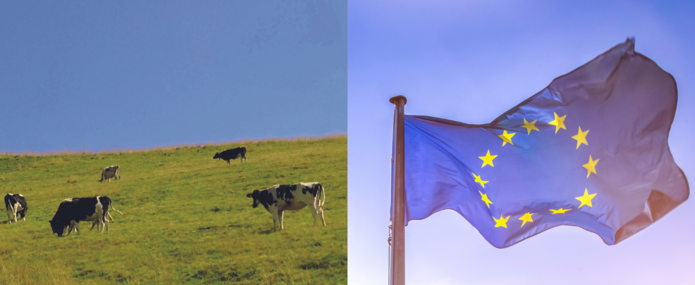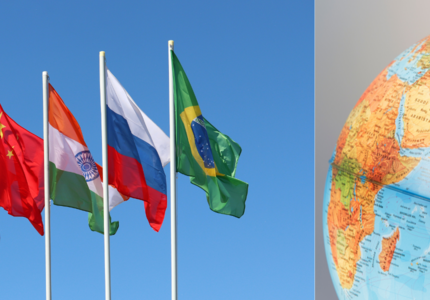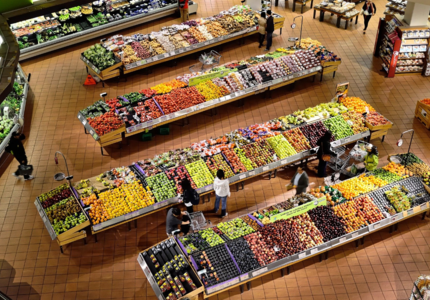The Common Agricultural Policy (CAP), which represents nearly one third of the European Union (EU) budget, is seen as a major lever to enable the European food system to address the environmental, social, economic and geopolitical challenges it faces. It is also seen as an irreformable policy–although continuously modified over time–and has been, for the last twenty years, the subject of extensive criticism concerning its lack of environmental ambition. Despite various adjustments, the latest reform of the CAP, which came into effect on January 1, 2023 (until December 31, 2027), is subjected to the same criticism. Many actors are therefore already considering its next reform. This blogpost provides food for thought in this debate, pointing out a series of key questions for those who would like to contribute to a more virtuous CAP in 2027.
The institutional framework
The CAP has historically been negotiated between a small number of actors: the agricultural ministries, brought together in the Council of the EU (AGRIFISH Council), the Commission's Agriculture Department (DG AGRI) and, since the entry into force of the Lisbon Treaty (in 2009), the Parliament's Committee on Agriculture and Rural Development (COMAGRI).
However, the latest reform of the CAP has brought about a few institutional changes. First, in the European Parliament, the Committee on the Environment, Public Health and Food Safety (COMENVI) obtained shared competences on articles dealing with climate and environmental issues, which gave more power to the political groups. While COMAGRI remains competent for all CAP issues, it must now work with these different actors.
Moreover, within the European Commission (EC), DG AGRI's monopoly has been challenged by the publication in December 2019 of the Green Deal and, a few months later, of its agricultural component, the "Farm to Fork" strategy: the EC vice-president, Frans Timmermans, who is in charge of this dossier, has thus taken part in the negotiations on the CAP, along with the Commissioner for Agriculture Janusz Wojciechowski.
Despite the opening to new institutional actors, the latest CAP reform is considered to be unambitious environment-wise. The predominance of the Council, and of national preferences within it–generally aligned with those of the majority agricultural unions–as well as the significant weight of DG AGRI and COMAGRI has helped maintaining the status quo.
The dynamic of openness described above seems to be continuing, but it is generating resistance, as shown by the recent letter from some fifteen Ministers of Agriculture to the President of the AGRIFISH Council. Can it give sufficient weight to the actors who want to bring social and environmental issues to the negotiations? Or sis an interventionI on the CAP negotiation rules and objectives necessary, which would ultimately mean changing the treaties that govern the functioning of the EU?
The multi-annual financial framework
An otheractor, often forgotten when talking about the CAP, especially because it has no official legislative power, is the European Council, which brings together the heads of state and government. However, it is of considerable importance because it defines the CAP budget and its distribution among Member States during the adoption of the multi-annual financial framework (MFF). These negotiations are also an opportunity for the heads of state to agree on a certain number of principles for the the CAP, which the negotiations on the CAP itself cannot undo. The European Council's conclusions on the MFF are adopted unanimously, which gives each Member State the right to veto. Unlike the negotiations on the content of the CAP described above, which are characterized by a high degree of political insularity, the MFF negotiations are a time of intense "bargaining" between different sectors of public intervention. The European Parliament also has the right to veto this text, but its political power remains limited, a fortiori on the agricultural component.
These negotiations have important consequences for the CAP: they simultaneously determine the overall envelope, the distribution between Member States, the distribution between what is called "direct aid" (CAP’s first pillar) and the second pillar, used to finance rural development and agri-environmental measures, as well as a series of operating principles such as the optional or mandatory nature of the aid ceiling.
The negotiation of the MFF thus appears to be a pivotal moment in the design of the CAP, all the more so in a context where the CAP budget is increasingly challenged by the rise of other concerns at the European level (defense, innovation, industrial policy, migration policy). Keeping the CAP strong (budgetarily speaking) will require demonstrating its added value in social, environmental and economic terms, and beyond the agricultural sector alone.
Alliances
Member States remain the main actors in these negotiations: their weight is decisive at every stage, including within the community institutions that are the Commission and the Parliament–the national affiliations of the Commissioners and MEPs play an important role in inter-institutional negotiations. The level of alignment between Member States, and the type of issues on which this alignment takes place, is a central factor in the compromises reached in the CAP and MFF negotiations. In the CAP negotiations, a logic of ad hoc alliances (on issues such as social conditionality, eco-regimes, redistribution of aid, etc.) has replaced the large historical blocs (schematically: states in favour of the CAP versus those opposed to it). On the other hand, the MFF negotiations remain dominated by relatively stable alliances (schematically: frugal states, which want a smaller budget, oriented towards new sectors, versus states in favour of a generous MFF, especially towards traditional policies such as the CAP and cohesion policy).
Given the current dispersion of interests and visions among the 27 EU Member States, on which subjects would an alignment be feasible? Which Member States could adhere to the idea of a common food policy (and no longer only agricultural), which is at the heart of the "Fork to Fork" strategy? The question is all the more relevant as a legislative proposal on "sustainable food systems" is to be published by the end of 2023 by the Commission and could frame the next discussions on the CAP.
External shocks and internal pressures
A final element to take into account when thinking about CAP reforms is that of internal and external pressures that favor the status quo or, on the contrary, drive change. External shocks, such as the international negotiations that took place within the framework of the General Agreement on Tariffs and Trade (GATT) and then the World Trade Organization (WTO), led to the adoption of two major reforms in the history of the CAP: those of 1992 and 2003. Internal pressures can also be at the origin of changes: enlargement of the EU, budgetary pressure, health and environmental concerns of citizens. However, these factors have not been sufficient, so far, to bring about a structural transformation of the CAP; changes are incremental and unambitious, as can be seen in the case of environmental issues.
To what extent do the Ukrainian crisis, repeated climate shocks or ongoing geopolitical recompositions constitute "shocks" likely to lead actors to move away from a "pro-status quo" bias? Conversely, can internal pressures, such as the Green Deal, lead to substantial changes in the upcoming CAP negotiations?
These are all dimensions that will be crucial to consider for the next reform of the CAP, on which the Commission should start working this year.







